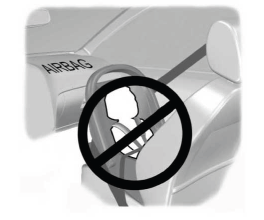Lincoln Aviator 2020-2025 Service Manual / Powertrain / Engine / Evaporative Emissions - 3.0L EcoBoost / Description and Operation - Evaporative Emissions - Overview
Lincoln Aviator: Evaporative Emissions - 3.0L EcoBoost / Description and Operation - Evaporative Emissions - Overview
Overview
The EVAP system prevents hydrocarbon emissions from entering the atmosphere by storing fuel vapors and routing the vapors to the engine to be consumed during normal engine operation.
The EVAP system consists of:
- EVAP canister
- EVAP canister purge valve
- EVAP canister vent solenoid
- Fuel Tank Pressure (FTP) sensor and tube
- Easy Fuel™ (capless) fuel tank filler pipe
- Fuel vapor vent valve
 Description and Operation - Evaporative Emissions - System Operation and Component Description
Description and Operation - Evaporative Emissions - System Operation and Component Description
System Operation
System Diagram
Item
Description
1
Fuel tank filler pipe
2
Fuel delivery module (FDM)
3
Fuel level sensor (FLS)
4
Fuel tank
5
Vapor recirculation line
6
Fuel tank pressure (FTP) sensor and tube
7
EVAP vapor blocking valve (VBV)
8
EVAP carbon canister
9
EVAP canister valve
10
EVAP canister inlet filter
11
Fresh air vent tube
12
Fuel bundle
13
EVAP purge valve (EPV) and tube
14
Intake manifold
Evaporative Emission (EVAP) Systems
The EVAP
system prevents fuel vapor build up in the sealed fuel tank...
Other information:
Lincoln Aviator 2020-2025 Owners Manual: What Is Auto Air Refresh (If Equipped)
Auto Air Refresh helps improve or maintain the quality of air within your vehicle cabin. How Does Auto Air Refresh Work? Auto Air Refresh uses an outside gases sensor to automatically adjust the climate control system to change from outside air to recirculated air to help reduce the entry of outside odors into the cabin...
Lincoln Aviator 2020-2025 Owners Manual: Proper Driver and Front Passenger Seating Adjustment
WARNING: National Highway Traffic Safety Administration (NHTSA) recommends a minimum distance of at least 10 in (25 cm) between an occupant's chest and the driver airbag module. To properly position yourself away from the airbag: Move your seat to the rear as far as you can while still reaching the pedals comfortably...
Categories
- Manuals Home
- Lincoln Aviator Owners Manual
- Lincoln Aviator Service Manual
- USB Port and Power Point Locations
- Changing the Front Wiper Blades - Vehicles With: Heated Wiper Blades
- Keyless Entry
- New on site
- Most important about car
Children and Airbags
WARNING: Airbags can kill or injure a child in a child restraint. Never place a rear-facing child restraint in front of an active airbag. If you must use a forward-facing child restraint in the front seat, move the seat upon which the child restraint is installed all the way back.

Copyright © 2025 www.liaviator2.com

